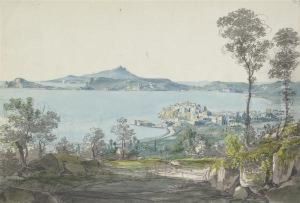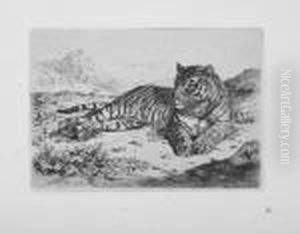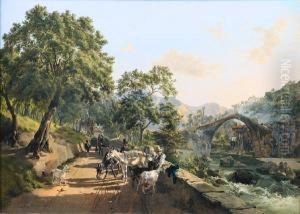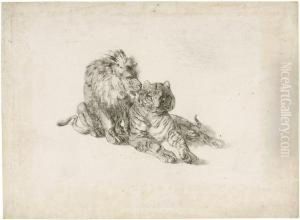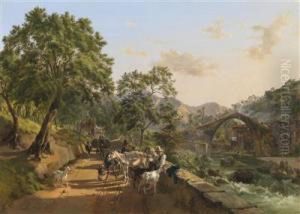Johann Nepomuk Rauch De Milan Paintings
Johann Nepomuk Rauch, also known as Johann Nepomuk Rauch de Milan, was an Austrian painter born in 1804. His work primarily falls within the Biedermeier period, a style that is characterized by a sense of realism and simplicity, mirroring the bourgeois sensibilities of the era. Rauch's contributions, however, remain somewhat obscure in the broader spectrum of European art history, partly due to the limited documentation and recognition of his works during and after his lifetime.
Rauch's artistic journey began in his native Austria, where he was initially influenced by the local art scene and the broader European artistic movements of the early 19th century. His style was reflective of the Biedermeier sensibility, focusing on portraits, landscapes, and genre scenes that emphasized straightforwardness and eschewed the grandiosity found in earlier European art. This approach made his work accessible and appealing to the burgeoning middle class, who were eager to see their own lives and environments reflected in art.
Despite his alignment with the Biedermeier style, Rauch sought to distinguish his work through a keen attention to detail and a dedication to capturing the essence of his subjects. Whether he was painting a serene landscape or a detailed portrait, his work displayed a commitment to realism and emotional depth. This dedication to capturing the mundane yet meaningful aspects of daily life was a hallmark of his artistic output.
Johann Nepomuk Rauch's death in 1847 marked the end of a career that, while not widely celebrated, contributed to the rich tapestry of 19th-century Austrian art. His works, though not as prolifically preserved or exhibited as those of his contemporaries, offer valuable insights into the Biedermeier period and its artistic expressions. Today, Rauch's paintings can be seen as a window into the everyday life and societal values of his time, providing a nuanced understanding of the period's aesthetic and cultural landscape.
